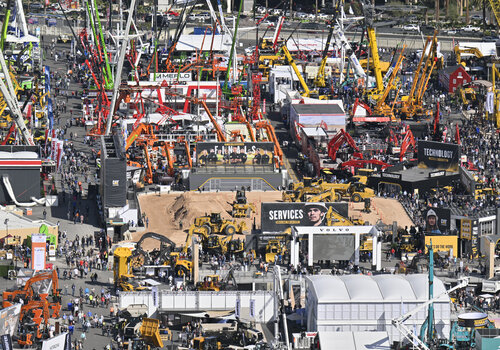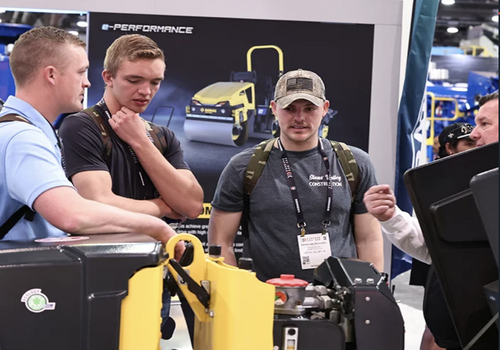The construction industry is rapidly evolving with the integration of advanced technology in heavy equipment. While these innovations enhance efficiency and productivity, they also introduce new safety challenges. Ensuring the safety of workers operating these machines is paramount. Here are 10 essential safety tips for construction industry workers to consider when operating new technology-driven heavy equipment.
1. COMPREHENSIVE TRAINING AND CERTIFICATION
Before operating any new technology-driven heavy equipment, workers must undergo comprehensive training. This training should cover the specific functionalities of the equipment, safety protocols and emergency procedures. Certification programs ensure that operators are proficient and understand the complexities of the machinery they will be using.
Key Points:
• Enroll in manufacturer-provided training programs.
• Obtain necessary certifications.
• Regularly update skills with refresher courses.
2. CONDUCT PRE-OPERATIONAL INSPECTIONS
Before using any heavy equipment, it is crucial to perform a thorough pre-operational inspection. This helps identify any potential issues that could compromise safety. Check for wear and tear, any fluid leaks or malfunctioning components. Ensure that all safety features, such as alarms and sensors, are functioning correctly.
Inspection Checklist:
• Check fluid levels (oil, hydraulic fluid, coolant).
• Inspect tires or tracks for damage.
• Test all safety alarms and sensors.
• Verify that all controls are responsive.
3. UNDERSTAND AND UTILIZE SAFETY FEATURES
Modern heavy equipment comes equipped with various safety features designed to protect operators and workers on-site. Familiarize yourself with these features and understand how to use them effectively. This includes automatic shut-off systems, collision detection and operator presence controls.
Safety Features to Know:
• Automatic shut-off systems.
• Collision detection and avoidance systems.
• Operator presence controls.
• Emergency stop buttons.
4. MAINTAIN CLEAR COMMUNICATION
Effective communication is vital on a construction site, especially when operating heavy equipment. Use hand signals, radios or other communication devices to stay in constant contact with other workers. Clear communication helps prevent accidents and ensures that everyone is aware of the equipment's movements.
Communication Tips:
• Use standardized hand signals.
• Equip workers with radios or communication devices.
• Establish clear communication protocols.
5. FOLLOW MANUFACTURER'S GUIDELINES
Always review and stick to the manufacturer's guidelines for operating and maintaining equipment. These guidelines are designed to ensure the safe and efficient use of the machinery. Ignoring these recommendations can lead to equipment failure and accidents.
Manufacturer's Guidelines:
• Follow recommended maintenance schedules.
• Use approved parts and accessories.
• Adhere to load limits and operational parameters.
6. WEAR APPROPRIATE PPE
Personal Protective Equipment (PPE) is essential for the safety of workers operating heavy equipment. Ensure that all operators and nearby workers wear the appropriate PPE, including hard hats, safety glasses, gloves and high-visibility clothing.
Essential PPE:
• Hard hats
• Safety glasses or goggles
• Gloves
• High-visibility vests or clothing
• Steel-toed boots
7. STAY AWARE OF SURROUNDINGS
Operators must always remain vigilant and aware of their surroundings. This includes being mindful of other workers, obstacles and changes in the environment. Use mirrors, cameras and sensors to enhance visibility and avoid blind spots.
Awareness Tips:
• Regularly check mirrors and cameras.
• Be cautious of blind spots.
• Stay alert to changes in the environment.
8. IMPLEMENT A SAFETY MANAGEMENT SYSTEM
A robust safety management system helps monitor and manage safety practices on the construction site. This system should include regular safety audits, incident reporting and continuous improvement processes. Encourage workers to report any safety concerns or near-misses to prevent future accidents.
Safety Management Components:
• Regular safety audits and inspections.
• Incident reporting and investigation.
• Continuous improvement and training.
9. LIMIT FATIGUE AND STRESS
Operating heavy equipment requires focus and concentration. Fatigue and stress can impair judgment and reaction times, increasing the risk of accidents. Ensure that operators take regular breaks, work reasonable hours and manage stress effectively.
Fatigue Management:
• Schedule regular breaks.
• Rotate operators to prevent fatigue.
• Encourage a healthy work-life balance.
10. EMERGENCY PREPAREDNESS
Despite all precautions, emergencies can still occur. Be prepared by having a clear emergency response plan in place. Ensure that all workers know the procedures for evacuations, medical emergencies and equipment malfunctions.
Emergency Preparedness Tips:
• Develop and communicate an emergency response plan.
• Conduct regular emergency drills.
• Ensure easy access to first aid kits and emergency equipment.
The integration of innovative technology in heavy equipment brings numerous benefits to the construction industry, but it also requires a heightened focus on safety. By following these safety tips, construction workers can operate technology-driven heavy equipment more safely and efficiently, reducing the risk of accidents and injuries. Safety is everyone's responsibility and staying vigilant is a requirement for a safe work environment.
PHOTO CREDIT: PROT56/BIGSTOCKPHOTO.COM











